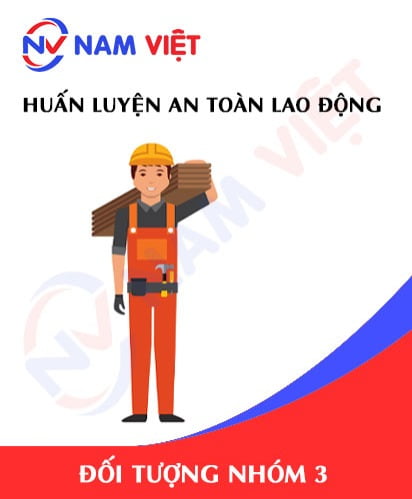Safety Document Group 3
Occupational Safety Training Materials for Operating Construction Machinery
DOWNLOAD THE OCCUPATIONAL SAFETY DOCUMENT SET (6 GROUPS, OVER 300 PROFESSIONS)
Construction machinery, also known as building machinery, includes machines and equipment used in civil engineering, industrial construction, transportation, bridges, ports, and airports… The documents for the occupational safety training course on operating construction machinery will help workers equip themselves with safety knowledge when operating various types of machinery and motor vehicles.
I. CAUSES OF ACCIDENTS WHEN OPERATING MOTOR VEHICLES
The root cause of accidents at construction sites is the failure to establish a safe work system and to train workers to adhere to that system. However, the most common causes of accidents are often due to one or more of the following factors:
- Poor driving skills combined with limited visibility when turning.
- Carelessness or disregard for particularly hazardous conditions such as working near the edge of a pit or under power lines.
- Poorly maintained machinery.
- Overloading or carrying bulky loads.
- Congested construction site.
- Poor traffic system.
- Lack of access roads along with uneven surfaces and scattered debris.

II. SAFETY PRECAUTIONS FOR MOTOR VEHICLES
Operators of transport vehicles carrying soil, stone, and materials on a construction site must be carefully trained and have a valid driver’s license issued by a competent authority, and they must be proficient in operating the vehicle safely. All drivers are instructed to handle situations well, for example, not driving across a slope or making sharp turns at high speed. In addition, drivers should always carry their license with them in all circumstances.
Roads must be designed to be flat, with signs and signals to prevent hazards such as overhead power lines or steep slopes. It is best to use one-way roads where possible. Vehicle operators also need to pay attention to the vehicle’s speed and should reduce speed appropriately for the site conditions and near construction areas. Areas for pedestrians and motor vehicles should be clearly separated. Dividers can be used for these areas.
In areas with overhead power lines, appropriate preventive measures should be taken, such as placing goalpost-style warning signs to prevent vehicles from colliding with them. Road barriers should be made of hard material, preferably wooden planks, and painted in two contrasting colors according to signal conventions. If there are power lines, there must be barriers on both sides, with a minimum distance of 6m between them. If a crane is operating under the power lines, it is best to contact the power supply company in advance to cut off the power during the crane’s operation.
When vehicles are not in use, the engine should be turned off and the gear set to neutral. The wheels should be chocked securely if the vehicle is parked on a slope. The dumper body should be in the lowered position if the vehicle is turned off; however, in some cases where it must be left in a raised position, the material must be securely fastened to prevent it from falling out.

1. Maintenance of motor vehicles consists of three main stages in the safety document for operating construction machinery
- Daily, the driver must check the water in the radiator (W), oil (O), fuel (F), lights (L), tire inflation (I), and brakes (B). To remember easily, just memorize the acronym WOFLIB;
- Weekly checks by a mechanic;
- Periodic maintenance as required by the manufacturer;
- After maintenance or repair, a report must be made and kept carefully.
2. Points to remember for motor vehicles in the safety document for operating construction machinery
- Keep the vehicle clean, tidy, and do not place tools or materials in the cabin that could obstruct control.
- Limit speed.
- Do not transport unauthorized persons onto the construction site.
- Do not drive across a slope.
3. Reversing in the safety document for operating construction machinery
- Workers are often run over when a vehicle is reversing and the driver cannot see everything behind them. Therefore, there should be a signaler to guide the reversing vehicle, and the driver must always keep the signaler in view. If there is no driver, they must get out of the vehicle to check if the rear is clear. Then, before reversing or backing up, an audible signal must be given. Many modern motor vehicles have a specific reversing alarm, but one should not rely too heavily on such devices.
- Cases of vehicles falling into pits still occur due to the vehicle getting too close to the edge, causing it to collapse, or when unloading material, the driver reverses too close to the edge and fails to brake in time. The use of necessary safety equipment such as barriers, stop signs, or a signaler is essential (see section 4). Construction motor vehicles are often unstable and prone to tipping over, so care should be taken not to make sharp turns at high speed. Tractors and forklifts should have a protective structure for the driver to guard against objects falling from above or being thrown from the vehicle during a rollover.
4. Remember
- If the vehicle overturns, stay in the vehicle and do not try to jump out.
- Cargo Load
- Pay attention to the safe working load of transport vehicles carrying soil, stone, and materials. The load should be distributed evenly and secured carefully, as an uneven load can cause instability when turning or braking, and unsecured goods can shift or fall out while the vehicle is moving. Do not load goods on parts that are not designed for load-bearing purposes. If there are any protruding parts, they must be marked with a flag. The dumper body of a tipper truck must be in the lowered position when the vehicle is moving.
- The training program for drivers must include the transportation and handling of goods and materials.
- Use steps to get on and off; if not available, use the wheels. Do not jump down from the cabin.
- Do not get on or off a moving vehicle.


